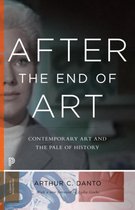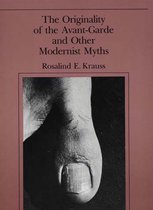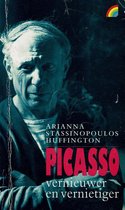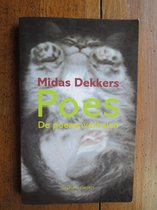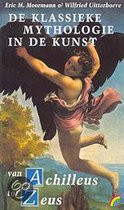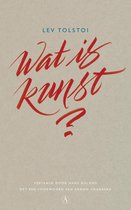After The End Of Art Contemporary Art and the Pale of History
Afbeeldingen
Artikel vergelijken
- Engels
- Paperback
- 9780691002996
- 09 november 1998
- 262 pagina's
Samenvatting
Productspecificaties
Inhoud
- Taal
- en
- Bindwijze
- Paperback
- Oorspronkelijke releasedatum
- 09 november 1998
- Aantal pagina's
- 262
- Illustraties
- Nee
Betrokkenen
- Hoofdauteur
- Danto
- Hoofduitgeverij
- Princeton University Press
Overige kenmerken
- Editie
- New edition
- Extra groot lettertype
- Nee
- Product breedte
- 140 mm
- Product hoogte
- 19 mm
- Product lengte
- 222 mm
- Studieboek
- Nee
- Verpakking breedte
- 152 mm
- Verpakking hoogte
- 19 mm
- Verpakking lengte
- 229 mm
- Verpakkingsgewicht
- 371 g
EAN
- EAN
- 9780691002996
Je vindt dit artikel in
- Categorieën
- Taal
- Engels
- Boek, ebook of luisterboek?
- Boek
- Periode
- ca. 1950-1999
- Beschikbaarheid
- Leverbaar
Reviews
Negatief, positief, neutraal: we zetten een review altijd online. We controleren wel eerst of ’ie voldoet aan onze reviewvoorwaarden en niet nep is. We controleren ook of ’ie is geschreven door iemand die het artikel heeft gekocht via bol.com en zetten dit er dan bij. De controles gebeuren automatisch, al kijken er soms mensen mee. Bol.com betaalt niet voor reviews. Als een reviewer door een andere partij is vergoed, staat dit in de review zelf.
Negatief, positief, neutraal: we zetten een review altijd online. We controleren wel eerst of ’ie voldoet aan onze reviewvoorwaarden en niet nep is. We controleren ook of ’ie is geschreven door iemand die het artikel heeft gekocht via bol.com en zetten dit er dan bij. De controles gebeuren automatisch, al kijken er soms mensen mee. Bol.com betaalt niet voor reviews. Als een reviewer door een andere partij is vergoed, staat dit in de review zelf.
-
Het einde van de grote verhalen voor de beeldende kunstToon alleen de eerste 3 punten
Positieve punten
- Toegankelijk
- Inspirerend
- goed geschreven
- verhelderend
- verhelderend
Geschreven bij After The End Of Art
Wat Arthur Danto bedoelt met de omineuze titel 'After the End of Art' is dat er na de Brillo Boxes van Andy Warhol in 1964 een eind is gekomen aan de grote verhalen van de kunst. Niet alleen het traditionele verhaal van kunst als geïdealiseerde representatie van de werkelijkheid, maar ook het moderne paradigma van de abstracte kunst.
Het traditionele Vasariaanse paradigma was ruim drie eeuwen tot omstreeks 1900 het leidende filosofische beginsel voor de kunstgeschiedenis. Het schilderij was het belangrijkste 'voertuig' voor de vooruitgang in de kunst gedurende die tijd. Hoe beter de werkelijkheid werd gerepresenteerd, hoe meer vooruitgang er was. Wat buiten dit mimetische paradigma viel, werd niet als kunst gezien, of genegeerd.
Premoderne kunstenaars als Van Gogh en Gauguin begonnen de mimetische kunstfilosofie te ondergraven door abstracte kenmerken toe te voegen. De Amerikaanse filosoof en kunstcriticus Clement Greenberg maakte er later een dominante non-mimetische theorie van, waarin representatie van de werkelijkheid een soort zonde werd. Vooruitgang werd nu bepaald door de mate van abstractie. Dit moderne paradigma betekende opnieuw buitensluiting van kunst ('aesthetical claensing') die daar niet in paste, zoals realistische kunst. Danto noemt dit in navolging van de filosoof Hegel, kunst die buiten het gebied van de kunstgeschiedenis ('out of the pale of history') valt.
Danto ziet in de Brillo Boxes van Warhol een omslag omdat de mimetische, noch de non-mimetische kunstfilosofie hier een geldende onderliggende kunstfilosofie kan zijn. Als een gewone Brillo Box kunst kan zijn, dan zijn we aangekomen bij de 'true question': Wat maakt iets tot kunst? Representatie, abstractie, stijl, zijn geen goede antwoorden meer. Volgens Danto is sinds 1964 de post-historische kunst aangebroken, alles is nu mogelijk, de kunst is pluriform geworden, er zijn geen objectieve a-priori criteria meer voor de kunstgeschiedenis. Het schilderij heeft niet langer een leidende rol, alles mag nu, elk medium, elke vorm, elke stijl. De kunstenaar steunt niet langer op een gegeven onderliggende kunstfilosofie, hij is als het ware zijn eigen filosoof geworden. De kunstgeschiedenis is teneinde, wat we nu nodig hebben is kunstkritiek, net zo pluriform als de kunst zelf. De kunst zelf is absoluut niet ten einde, integendeel.Vond je dit een nuttige review?70
Kies gewenste uitvoering
Prijsinformatie en bestellen
De prijs van dit product is 36 euro en 76 cent. Dit is een tweedehands product.Ref9961
- Bestellen en betalen via bol
- Prijs inclusief verzendkosten, verstuurd door BAY EXPRESS
- 30 dagen bedenktijd en gratis retourneren
Rapporteer dit artikel
Je wilt melding doen van illegale inhoud over dit artikel:
- Ik wil melding doen als klant
- Ik wil melding doen als autoriteit of trusted flagger
- Ik wil melding doen als partner
- Ik wil melding doen als merkhouder
Geen klant, autoriteit, trusted flagger, merkhouder of partner? Gebruik dan onderstaande link om melding te doen.

